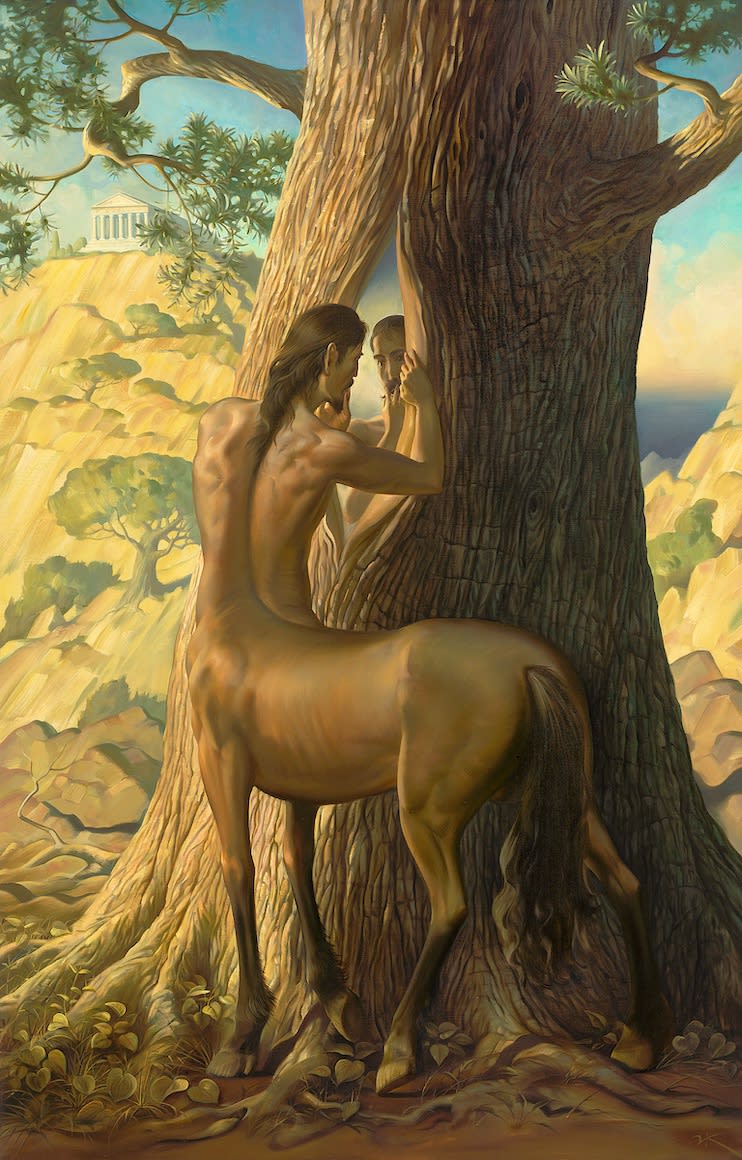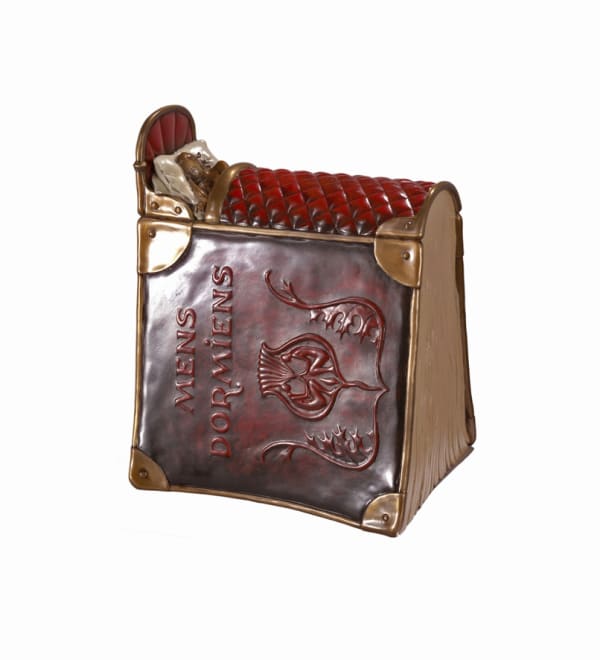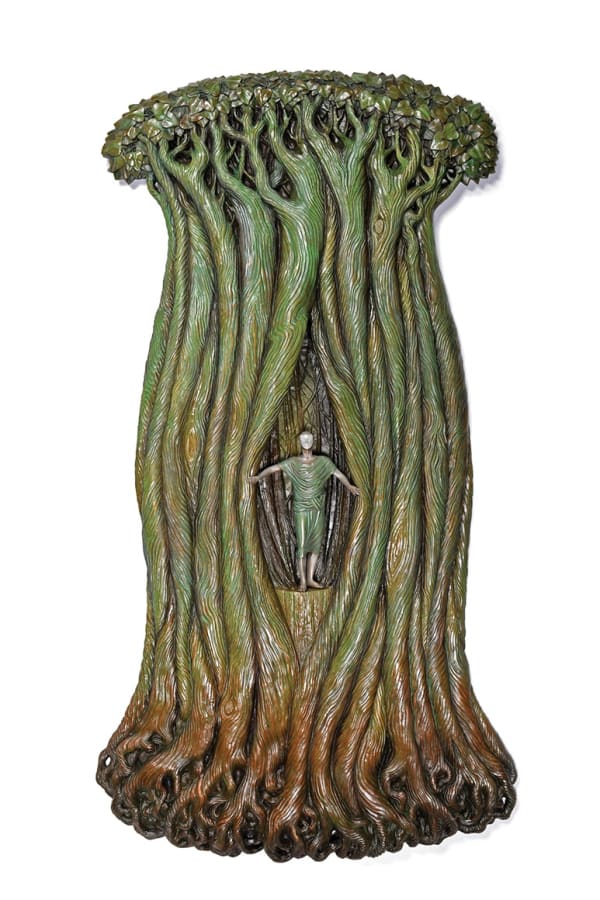SELF COGNITION
Further images
Visualisation
At a glance, we see the centaur who has stopped by the tree, seeing the reflection of his face for the first time. Being aware of himself as a horse with base instincts, he finally has a chance to recognize his human nature, thus illustrating the dualistic nature of people.
The centaur in Ancient Greek mythology was a symbol of man living by his baser impulses, especially lust, violence and drunkenness. In Greek Art, this was shown as a horse with a human torso and head. The creature earned its heavenly place as a southern constellation.
The dualism of human nature is the key idea of the famous novel by Robert Luis Stevenson, "Strange Case of Dr. Jekyll and Mr. Hyde”, published in 1886, centuries after the Greeks addressed it in centaur imagery. Dr. Jekyll literally divides his personality in two parts so he can live as he really wishes: Jekyll as the honest, respected doctor, and Hyde, ruled by immoral actions and base instincts. This duality symbolizes the philosophical concept called “the struggle and unity of the opposites”.
In the painting, the human nature, reason and intelligence, is taking over, therefore signaling inevitable progress.
- X
- Tumblr
-
 OCEAN ROAR - 24 x 53 INCHESPRINT ON CANVAS24 x 53 INCHESSigned and Numbered Limited Edition$2,800.00
OCEAN ROAR - 24 x 53 INCHESPRINT ON CANVAS24 x 53 INCHESSigned and Numbered Limited Edition$2,800.00 -
 PILLOW BOOKBRONZE SCULPTURE9 x 7 x 11 INCHES$5,500.00
PILLOW BOOKBRONZE SCULPTURE9 x 7 x 11 INCHES$5,500.00 -
 PILLOW BOOKPRINT ON CANVAS20 x 20 INCHESSigned and Numbered Limited Edition$2,900.00Sold
PILLOW BOOKPRINT ON CANVAS20 x 20 INCHESSigned and Numbered Limited Edition$2,900.00Sold -
 BEHIND THE TREES - 39 x 49 INCHESPRINT ON CANVAS39 x 49 INCHESSigned and Numbered Limited Edition$6,700.00Sold
BEHIND THE TREES - 39 x 49 INCHESPRINT ON CANVAS39 x 49 INCHESSigned and Numbered Limited Edition$6,700.00Sold -
 LE REVEPRINT ON CANVAS27 x 46 INCHESSigned and Numbered Limited Edition$4,100.00Sold
LE REVEPRINT ON CANVAS27 x 46 INCHESSigned and Numbered Limited Edition$4,100.00Sold -
 ABOVE THE SEA LEVELPRINT ON CANVAS46 x 26 INCHESSigned and Numbered Limited Edition$4,600.00Sold
ABOVE THE SEA LEVELPRINT ON CANVAS46 x 26 INCHESSigned and Numbered Limited Edition$4,600.00Sold -
 READING LAMPPRINT ON CANVAS21 x 28 INCHESSigned and Numbered Limited Edition$3,200.00Sold
READING LAMPPRINT ON CANVAS21 x 28 INCHESSigned and Numbered Limited Edition$3,200.00Sold -
 NEROBRONZE SCULPTURE - WALL MOUNT58 x 8 x 31 INCHES$31,000.00
NEROBRONZE SCULPTURE - WALL MOUNT58 x 8 x 31 INCHES$31,000.00 -
 NERO - 36 x 21.75 INCHESPRINT ON CANVAS36 x 21.75 INCHESSigned and Numbered Limited Edition$3,200.00Sold
NERO - 36 x 21.75 INCHESPRINT ON CANVAS36 x 21.75 INCHESSigned and Numbered Limited Edition$3,200.00Sold -
 ABOVE THE SEABRONZE SCULPTURE25 x 14 x 10 INCHES$12,900.00
ABOVE THE SEABRONZE SCULPTURE25 x 14 x 10 INCHES$12,900.00
This website uses cookies
This site uses cookies to help make it more useful to you. Please contact us to find out more about our Cookie Policy.

















